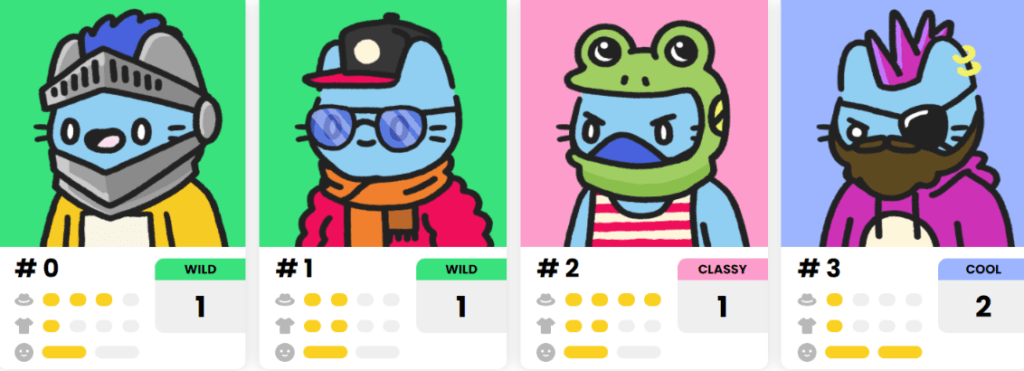Learn about generative art, a way of creating digital art that incorporates programming and artificial intelligence to produce unique designs and, now, million-dollar NFT collections.
Generative art has combined the power of algorithms and artificial intelligence with artistic creativity allowing artists to create thousands of unique art pieces within seconds.
Generative artists develop digital art projects by collaborating with computer programs that combine pre-designed characteristics within a framework into unique forms. This brave new world of computer art has been trendy in the Non-Fungible-Token (NFT) market, where collections of generative art have exploded in value in the past two years.
This article will explore the history of generative art, its creation, the industry’s top names, and the most valuable algorithmic art NFT collection.
Table of Contents
The History of Generative Art
Even though the hype around generative art appears to be directly linked to the rise of NFTs, the field has actually been around since the middle of the 20th century.
Herbert Franke, an Austrian artist, is believed to have kickstarted generative art when he began experimenting with using light to create random pieces of work. Franke’s idea was combined with the power of programming language by Vera Molnar – a Hungarian artist – who focused on using coding to push the boundaries of machine learning in creating visual art.
Molnar built the framework that opened the door to combining the world of computer science and art. George Nees, a German professor of computer science, took generative art by bringing several breaks through to the field in the second half of the 20th century on the subject.
Now that we can see where generative art comes from, let’s explore how it works.
How Does Generative Art Work
Generative art is in part created by a human artist and in part by Artificial intelligence (AI). The machine learning side of this type of art takes shapes, patterns, and colors and arranges them into various forms.
The advantage of AI is that it can learn, which allows it to take an initial set of instructions from artists and expand on the ideas.
For example, if you look at generative art in blue-chip NFT collections, such as the multi-million dollar CryptoPunks project, you’ll notice that each character has differently arranged features, but the basic idea behind the art remains the same; this is how the interaction between AI and the artists unfolds.
There are three critical elements involved in a computer program creating generative art:
- Algorithms: Algorithms make it possible for artificial intelligence programs to build generative art.
- Uniqueness: Although the artist sets out parameters, the artificial intelligence works freely within the framework, allowing it to create entirely new random forms of unique digital art.
- Repetition: Although random AI decisions create generative art, there is an inevitable repetition built into the mathematics behind the technique due to its reliance on patterns, geometry, and fractals.
As you can see, generative art is a far cry from the analog art world, in the 21st-century, paintbrushes and dusty rooms are replaced with; programs, datasets, and machine learning.
Although the role played by technology in generative art is central, it’s important to remind ourselves that this is very much a collaborative effort that bridges the artistic world and cutting-edge technology.
Making Generative Art
Getting involved with any form of emergent technology can be daunting, and just hearing the word ‘algorithm’ might put a budding artist off trying their hands at generative art. Luckily the internet has opened the door to a breadth of knowledge, so even if you aren’t a programmer, there are plenty of open-source tutorials to help you get to grips with the technology.
The main programming languages used to create generative art are Python, R, JavaScript, and C++. All of these languages are covered extensively by online tutorials.
Once you’ve mastered coding and created a generative art collection, you’ll notice three clear advantages of using computer programs to create a work of art.
The Most Important Features Of Generative Art
- Random Outcome: Neither the program nor the artist knows what the end result of the algorithm design will be until the token is minted, which adds an element of surprise for the developers and the collectors.
- Ease: Some apps make creating generative art possible even for those who don’t have a computer science degree which means creating an extensive collection of unique art is possible for anyone.
- Speed: Producing 10,000 digital art pieces by hand would be a painstakingly long process if it wasn’t for the support of machine learning programs.
Now that we’ve covered how generative art is made and why it’s such a powerful tool, let’s look at some of the top names in this art form.
5 Big Names In Generative Art
Generative art has come a long way since its inception in the 20th century, and several artists and computer scientists have left their mark on the field.
1. Sol LeWitt
Sol LeWitt was an artist from the United States who rose to fame in the 1960s due to his impressive work in the minimalist and conceptual field of art. He later combined his style with generative art, and the end result was several highly regarded pieces of work.
2. Harold Cohen
Harold Cohen was a British artist who created the AARON computer program that used artificial intelligence to create art, a significant step forward for the emergent art form. Cohen’s generative art was highly regarded in the art world and even went on display at the Tate Gallery in London.
3. Philip Galanter
Philip Galanter, a generative art researcher who has lectured at the prestigious New York University, is credited with developing ‘complexity theory.’
The theory states that patterns, repetition, and visual symmetry have always played a role in the field. Therefore, generative art is not a new field of art but something that has existed since the first cave dwellers started drawing primitive depictions on walls.
4. Frieder Nake
Frieder Nake was a pioneer in machine learning art in the 1960s. He produced various pioneering pieces of art using generative systems in the second half of the 60s and then focused on teaching the next generation of generative artists. Although Nake’s career in creating digital art was short, his work is still referenced in the field today.
5. Casey Reas
Casey Reas is an American artist who explores procedural art through software. His work uses computer programming to develop both static and dynamic generative artworks. Casey Reas’s work has been displayed worldwide and has significantly contributed to the growth of the generative art field.
While these five people have contributed immeasurably to generative art, currently, the most exciting aspect of this technology can be found in the world of blockchain and NFTs.
Blockchain and Generative Art
The use of autonomous systems to create art has been particularly successful when combined with blockchain technology in the NFT space. In short, a blockchain is a decentralized ledger that keeps track of transactions; you’ve probably heard it mentioned in the context of cryptocurrencies such as Bitcoin.
Another use case of blockchain technology has been the creation of NFT collections which are made up of unique tokenized pieces of digital art. NFT art is so valuable because the blockchain guarantees it can only have one owner and cannot be copied, making it resistant to forgery – something that has haunted the fine art world for centuries.
Generative art has allowed NFT developers to launch vast collections of digital characters with random features within a consistent framework. The element of chance involved in creating these collections often determines their value.
We’re going to take a look at the most successful and ambitious NFT projects that were made using generative art.
1. CryptoPunks

It would be impossible to discuss generative art NFTs without mentioning the collection that pioneered the use of an autonomous system in creating NFTs.
The CryptoPunks collection comprises 10,000 unique pixilated punks with a wide variety of AI-assigned features and launched in 2017 before anyone really knew what generative art NFTs were.
The collection created the Profile Picture (PFP) phenomenon whereby people purchased NFT characters and used them on social media sites such as Discord and Twitter. The most valuable PFPs are those the computer program blessed with the rarest randomly assigned features.
Punks that are lucky enough to be graced with alien or ape features are the rarest and have been known to fetch over $5 million at auction. Many of the generative art NFT collections that you’ll see in this article were influenced directly by the Punks.
2. CrypToadz

The CrypToadz collection of 6,969 generative art pixilated Toadz follows closely in the footsteps of CryptoPunks. The Toadz were created by a mysterious digital artist known as Gremplin, who appears to have designed them as ideal PFP characters.
The Toadz has many features; those with the rarest generative designs, such as #1793, have sold for over $50,000.
3. The Bored Ape Yacht Club

The Bored Ape Yacht Club (BAYC) has taken the PFP concept and built on it by creating an entire ecosystem around its algorithm-generated Apes.
The 10,000 Apes are designed with a random compilation of some 170 different physical traits. The colorful Apes quickly became a hit with the NFT community following their release in 2021 and are now one of the most valuable collections on the market.
Apes such as #2087 and #7678 were assigned some of the rarest features, such as colorful fur and a crown, by the computer program, which is why they are worth millions of dollars.
Beyond being fantastic profile pictures, these Apes are given value by the ecosystem that they inhabit. Owners of a Bored Ape are granted access to an exclusive online community where the native currency ApeCoin is used to upgrade Apes and access exclusive features.
4. Chromie Squiggles

Chromie Squiggles are one of the purest expressions of generative art in the NFT world. The artist Erick Calderon created the collection, who says each unique rainbow-colored squiggle embodies his personal signature as an artist and developer.
The squiggles are generated by a computer program from nine different schemes and a combination of variables. The first squiggles were created in November, and so far, there are over 9,000 squiggles.
The cheapest Squiggles on the market will set you back around $16,000 while the rarest cost is over $100k – showing just how successful this project has been.
5. Autoglyphs
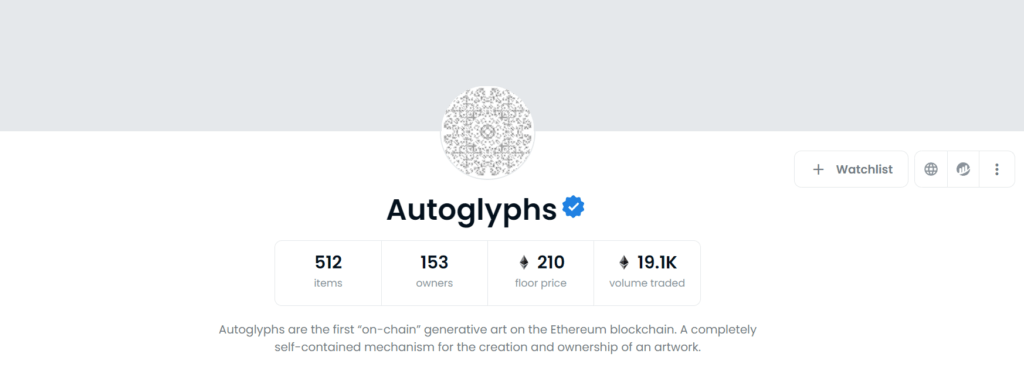
The Autoglyphs NFT collection was created by Larva Labs, the team behind CryptoPunks, and it’s the first generative art project to be 100% on the blockchain. The Glyphs are generated directly from a smart contract written on the Ethereum blockchain. When the smart contracts are minted by a buyer, they create randomly generated ASCII art.
ASCII art is a combination of black plusses and minuses that a generated into a mesmerizing blend of patterns on a white background. There are currently 512 Autoglyphs, and the cheapest Glyphs are valued at over $600,000.
6. Cool Cats
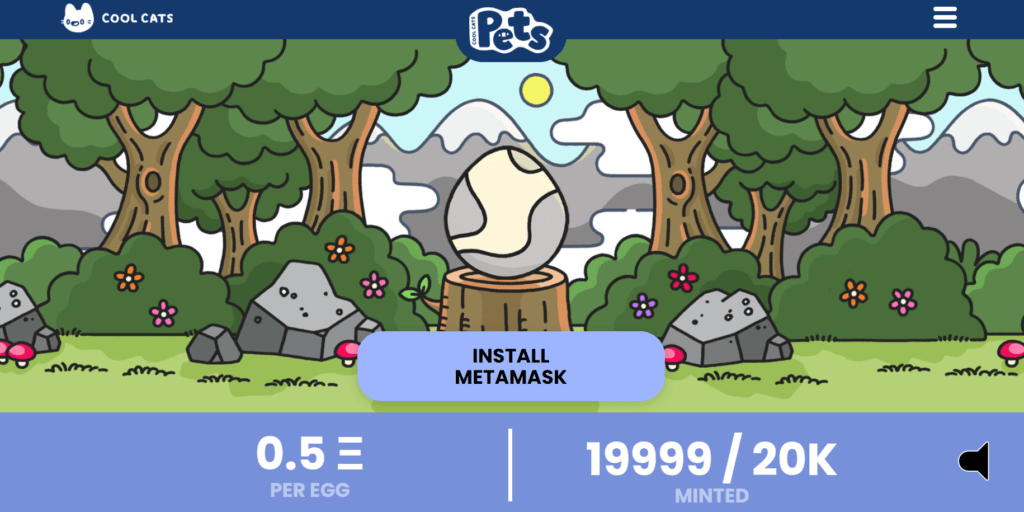
The Cool Cats collection of generative art was released on the Ethereum blockchain in 2021 and incorporates 9,999 colorful cats.
The generative artworks were created by an algorithm with over 300,000 different potential variations. The features assigned to a cat determine its ‘cool rating,’ which in turn dictates its value on the open market.
If a cat is endowed with common features such as a beanie hat, it receives fewer ‘cool points’ while cats with rare features such as zombie characteristics have more ‘cool points.’ The coolest cats in the collection, such as #1490, have sold for over $1 million and the cheapest cats are worth around $16,000.
7. Meebits

Meebits is a collection of 20,000 generative art avatars designed for the metaverse by LarvaLabs. The collection was launched in May 2021, and it leveraged machine learning to create highly-detailed unique 3-D characters. The number of traits that the algorithm could choose from when designing the characters was vast, ranging from tattoos and shoes to hairstyles and T-shirts.
The Meebits collection took the CryptoPunks concept of unique computer-generated characters to the next level by adding an extra dimension and an impressive level of detail.
According to the developers, Meebit owners will be using their generative art avatars to explore the metaverse in the near future. Meebits are a blue-chip NFT with some of the selling for millions of dollars and even the cheapest avatars costing around $20,000.
8. The Eternal Pump
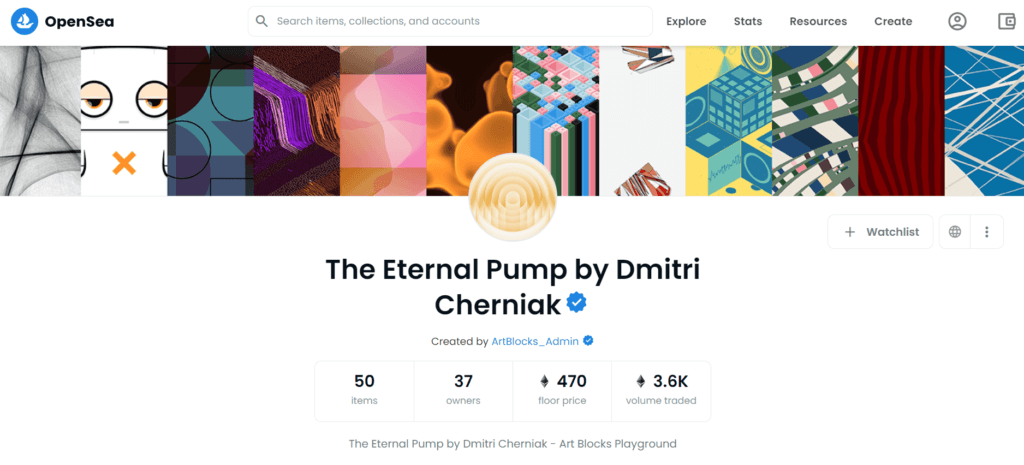
The Eternal Pump NFT collection of 50 cylindrical shapes was created by the digital artist Dmitri Cherniak in collaboration with the Art Blocks Playground.
There isn’t much information available online regarding the project, but this is not a collection to overlook with a floor price of over $1 million. The rarity of the Eternal Pumps is determined by features such as background, shape, wall, and vibe, which are all determined before minting by a generative art program.
9. Creature World
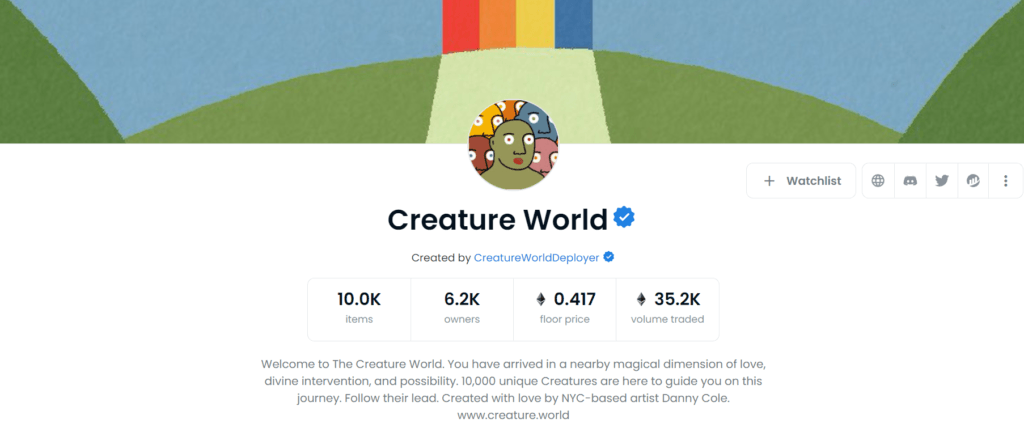
Created by Danny Cole, a New York City-based artist, the 10,000 members of Creature World are unique PFP-ready NFTs. The creatures take inspiration from past PFP projects by using computer programs to create unique colorful characters from 100s of different feature combinations.
The project launched in 2021, and not only did it gain traction among NFT enthusiasts, but it also caught the eye of the NBA star Shaquille O’Neal. The creatures are relatively cheap compared to other top generative art projects, with a floor price of an estimated $1000 and the most expensive tokens selling for around $10,000.
The Final Word About Generative Art
Generative art feels like a natural evolution in the world of art as it brings the field into the 21st century using cutting-edge artificial intelligence to level up the creative process. Although generative art first began to make waves in the middle of the 20th century, it appears that it is now going mainstream due to its role in the exponentially growing NFT market. As the value of the NFT market grows, we can expect to be hearing more and more about the power of generative art.

